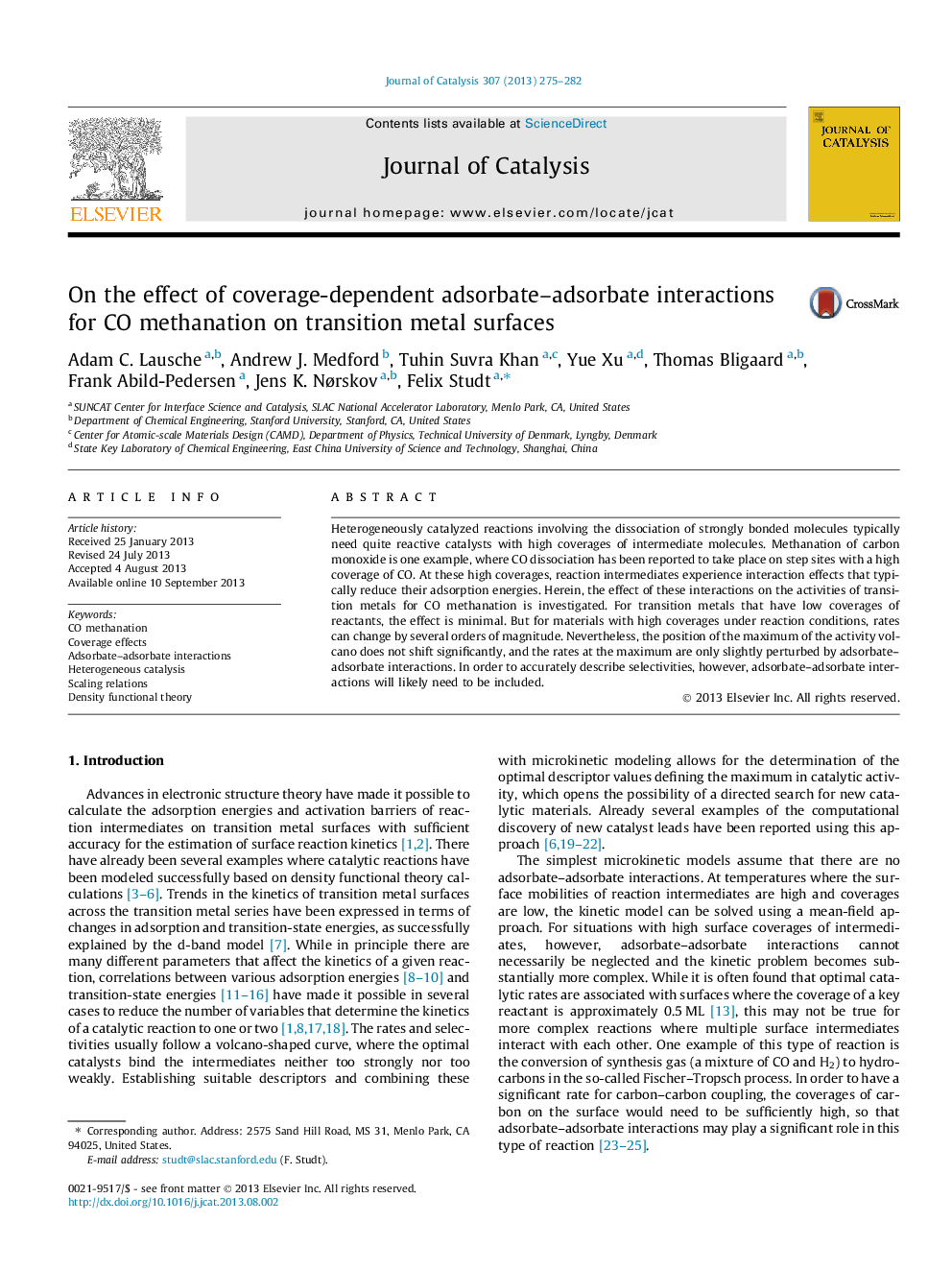| Article ID | Journal | Published Year | Pages | File Type |
|---|---|---|---|---|
| 61170 | Journal of Catalysis | 2013 | 8 Pages |
•Trends in catalytic activity for CO methanation are examined for transition metal surfaces.•We model adsorbate–adsorbate interactions between methanation intermediates on multiple sites.•DFT and microkinetic modeling predicts the CO methanation rates of transition metals.•Trends in methanation rates are preserved when interaction effects are included.•Interactions were found to increase the rates of the most reactive metals.
Heterogeneously catalyzed reactions involving the dissociation of strongly bonded molecules typically need quite reactive catalysts with high coverages of intermediate molecules. Methanation of carbon monoxide is one example, where CO dissociation has been reported to take place on step sites with a high coverage of CO. At these high coverages, reaction intermediates experience interaction effects that typically reduce their adsorption energies. Herein, the effect of these interactions on the activities of transition metals for CO methanation is investigated. For transition metals that have low coverages of reactants, the effect is minimal. But for materials with high coverages under reaction conditions, rates can change by several orders of magnitude. Nevertheless, the position of the maximum of the activity volcano does not shift significantly, and the rates at the maximum are only slightly perturbed by adsorbate–adsorbate interactions. In order to accurately describe selectivities, however, adsorbate–adsorbate interactions will likely need to be included.
Graphical abstractThis paper investigates the effect of adsorbate–adsorbate interactions on the CO methanation rates of transition metal surfaces. These interactions tend to increase the rates of the more reactive metal surfaces, while retaining the position of the volcano maximum and its overall shape.Figure optionsDownload full-size imageDownload high-quality image (190 K)Download as PowerPoint slide
